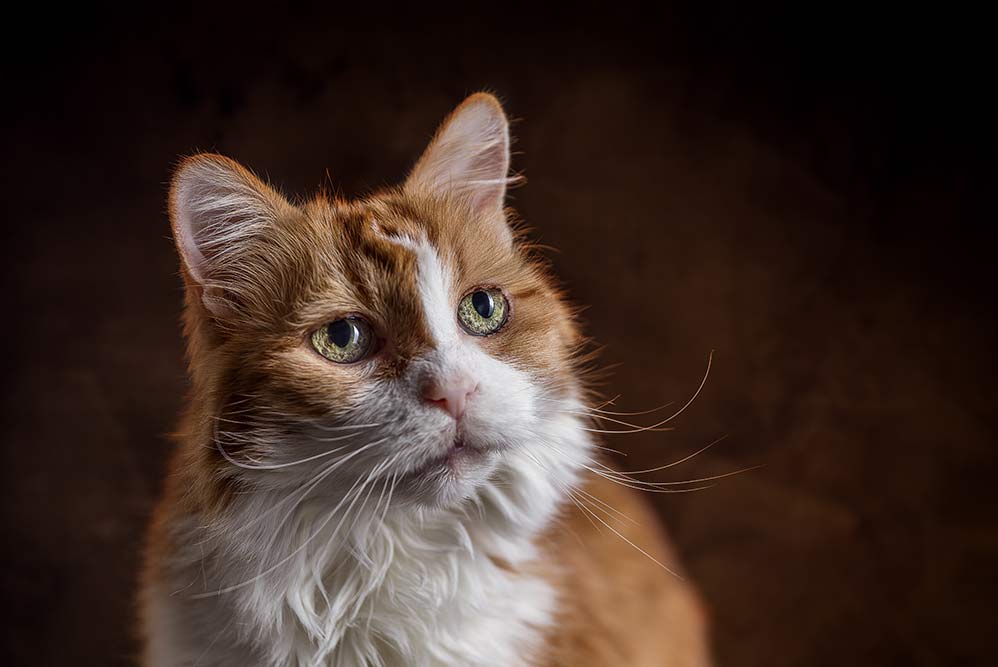How to Know When to Put Your Cat Down
- July 9, 2024
- Celebrations of Life

Making the decision to put your cat down is one of the hardest choices a pet owner can face. Our cats are not just pets—they’re family members who provide love and companionship throughout their lives. When they reach a point where their quality of life diminishes due to illness, age, or injury, it’s crucial to recognize the signs that indicate it may be time to consider euthanasia.
In this guide, we’ll explore how to recognize when it’s time to say goodbye and offer advice on making this emotional decision. We’ll also cover ways to honor your cat’s memory, including Pet Memorials and how you can submit an obituary for your beloved feline friend.
Recognizing the Signs: When Is It Time?
There isn’t a single answer to knowing when it’s time to put your cat down. Every situation is unique. However, there are several signs that veterinarians and animal behaviorists use to assess whether a pet’s quality of life has declined to the point that euthanasia is the most humane option.
- Chronic Pain
Cats are skilled at hiding their pain, but signs like limping, crying out when touched, or reduced mobility could mean that your cat is suffering. If pain medications are no longer effective, it may be time to consult with your veterinarian. - Severe Weight Loss
A cat that is experiencing extreme weight loss, even if eating normally, may be suffering from a severe illness such as cancer or kidney failure. Unintended weight loss is a sign that your cat’s body is shutting down. - Inability to Eat or Drink
If your cat has lost interest in food or water, this is often a clear indication that they are nearing the end of their life. Dehydration and malnutrition can quickly worsen other conditions and lead to suffering. - Respiratory Problems
Difficulty breathing or labored breaths may suggest that your cat’s body is no longer functioning properly. Respiratory distress is a serious condition that can indicate terminal illness or extreme discomfort. - Declining Hygiene
Cats are naturally clean animals. If your cat has stopped grooming itself, it may be a sign that they are no longer physically able to do so. A matted coat, urine scalding, or an unkempt appearance are red flags. - Loss of Interest in Favorite Activities
When your cat no longer enjoys things that once brought them happiness—whether it’s playing, interacting with family members, or simply basking in the sun—this could be a sign that they are no longer experiencing a good quality of life. - Uncontrollable Bodily Functions
Frequent accidents, especially when your cat has always been litter-trained, can indicate serious health problems such as bladder or bowel issues, or cognitive decline.
Consulting Your Veterinarian
If you’ve noticed one or more of these signs in your cat, the first step should be a visit to your veterinarian. They can provide guidance on your pet’s condition, suggest palliative care options, or help you decide if euthanasia is the most compassionate choice. A quality of life scale, such as the one offered by the American Association of Feline Practitioners, may also help you assess your cat’s well-being.
Euthanasia is a medical procedure that can prevent further suffering, and your vet will be there to guide you through the process, ensuring it is as peaceful as possible for both you and your pet.
Coping with the Decision
No matter how clear the signs may be, putting your cat down is a heartbreaking decision. It’s normal to feel guilty or uncertain about the choice, but remember that choosing to alleviate your cat’s suffering is an act of love. Support groups or counseling services for grieving pet owners can also help you navigate your emotions during this time.
Honoring Your Cat’s Memory with Pet Memorials
Once your cat has passed, you may find comfort in memorializing them in a special way. Pet Memorials can provide a lasting tribute to your feline friend. Whether it’s a custom urn, a photo album, or even a memorial garden, there are countless ways to celebrate the joy they brought into your life.
At PetFuneral, we offer resources to help you honor your pet. You can also Submit an Obituary for your cat to share their story and commemorate their life. By submitting an obituary, you not only create a lasting tribute but also help other pet owners feel connected in their grief.
For more ideas on how to create a meaningful pet memorial, visit our Pet Memorials page.
Dealing with Grief After Saying Goodbye
Grieving the loss of a cat is just as valid as grieving the loss of any other family member. It’s essential to allow yourself the time and space to mourn. Everyone processes grief differently, but here are a few suggestions that may help:
- Journaling your feelings: Writing about your cat’s life and your relationship with them can be a powerful way to process your emotions.
- Creating a photo book: A visual memory of your cat’s happiest moments can help you cherish the life they lived.
- Connecting with others: Sharing your feelings with friends, family, or online communities can provide comfort and help you feel less isolated in your grief.
Remember, there’s no “right” way to grieve, and the process may take longer than expected. Allow yourself time to heal.
The Role of Pet Memorials in Healing
For many pet owners, memorializing their cat helps them find closure. Creating a Pet Memorial not only celebrates your pet’s life but also serves as a reminder of the happiness they brought into your home. Whether through an engraved stone, a framed photo, or an online obituary, memorials help you keep your pet’s memory alive.
If you’re considering ways to honor your cat, explore the variety of Pet Memorials we offer on PetFuneral. We also encourage you to Submit an Obituary as a way to preserve your cat’s story for years to come.
FAQ: Knowing When to Put Your Cat Down
1. How do I know if my cat is in pain?
Cats may hide their pain, but signs include limping, crying when touched, or avoiding physical activity. Chronic pain may signal it’s time to consider euthanasia.
2. Is weight loss a sign my cat is dying?
Yes, significant, unexplained weight loss can indicate severe health issues, such as kidney failure or cancer. Consult your veterinarian if you notice sudden weight loss.
3. What is the quality of life scale for pets?
The quality of life scale is a tool that helps pet owners assess their cat’s well-being by rating factors such as pain, hygiene, and appetite. It’s helpful when making end-of-life decisions.
4. How do I cope with the grief of losing my cat?
Grieving is a personal process. You can cope by journaling, creating a photo album, or seeking support from friends, family, or online communities. PetFuneral also offers resources for those grieving their pets.
5. Can I submit an obituary for my cat?
Yes, you can Submit an Obituary to memorialize your cat and share their life story with others.
Related Articles

What Happens to Bonded Dogs When One Dies?
- August 12, 2025
- Celebrations of Life

How to Honor Your Pet Companion’s Memory
- July 18, 2025
- Celebrations of Life
Search Articles
Sign Up For Our
Newsletter
Stay up to date on resources to help you prepare.


